Pantex Blog
Two Pantexans recognized among 2020 Top 20 Under 40
Congratulations to Pantexans Jeremy Baker and Kim Bush who were recognized by the Amarillo Chamber of Commerce as members of the 2020 Top 20 Under 40.
The award is given annually to area early career professionals who demonstrate professional excellence and bring value to the Amarillo business community.
|
|
Baker has been at Pantex almost 13 years and is currently the C-Shift captain for the Pantex Fire Department.
He graduated from Caprock High School and has Associate of Applied Science degrees in Paramedicine and Fire Protection Technology from Amarillo College. He also graduated this year with a bachelor’s degree in Fire and EMS Administration from Eastern New Mexico University.
Baker holds a number of certifications in addition to Paramedic and Firefighter including Texas Infection Control Officer, American Heart Association Life Support Instructor, and Texas Commission of Fire Hazmat Tech.
In his free time, Baker teaches American Heart Association courses, works part-time as faculty for the Amarillo College Emergency Medical Services Professionals program, and works part-time as a paramedic for Amarillo Medical Services.
Baker is married and has two children.
|
|
Bush has worked at Pantex for 13 years and is currently a Materials Engineering manager. She has held many roles at Pantex and worked her way up from an entry-level scientist. She has worked as a process engineer, scientist, and Safety Analysis Engineering analyst. Other contributions include work in such departments as Manufacturing, Environmental Stewardship (NEPA and Air Quality), Tooling and Machine Design, and Explosives Technology.
She holds a bachelor’s degree in Environmental Science and Biology, master’s degree in Environmental Science, and is pursuing a doctorate in Systems and Engineering Management.
While at Pantex, Bush has been part of a group that received an NA-50 award this year.
In her free time, Bush volunteers as the committee chair for Pack 301 with the Boy Scouts, soccer coach for Kids, Inc., and a volunteer Sunday school teacher for Polk Street United Methodist Church where she is a member. When time allows, she volunteers at the High Plains Food Bank and Snack Pak 4 Kids.
Bush is married and has two children.
To be eligible for the Amarillo Chamber of Commerce Top 20 under 40 Award, the candidates must be employed in the area for at least three years and in the same field during that time, though not necessarily at the same businesses. Winners were selected by judges who reviewed nominations and picked the top 20 award winners as up-and-coming Amarillo professionals who are standouts in their professions.
NNSA Release: Pantex breaks ground for High Explosive Science and Engineering facility
Facility will replace 15 obsolete facilities at Pantex with average age of 68 years
AMARILLO, Texas – On Dec. 8, the U.S. Department of Energy’s National Nuclear Security Administration (DOE/NNSA) marked an infrastructure modernization milestone with an internal groundbreaking ceremony to begin construction of the High Explosive Science and Engineering (HESE) facility at the Pantex Plant.
Read full press release on the NNSA website.
Building a village
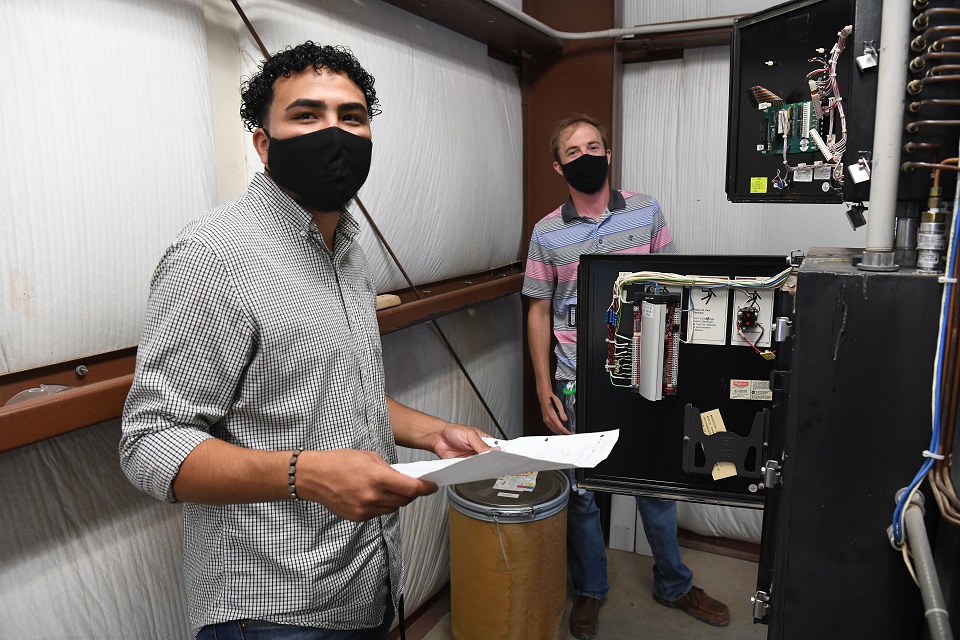
Pantex summer intern Hector Rivero-Figueroa, left, works on a compressor air filter design with coworker Clint Hanes. Social distancing and face coverings were the norm during internship 2020.
In a typical April, interns would be finalizing travel and living arrangements for their anticipated summer internships. But in 2020, COVID-19 created pandemonium, and many interns across the country were disappointed when many companies canceled internships. CNS Human Resources and the executive leadership team wanted to make CNS's program happen, so HR enlisted help from multiple organizations, including Safeguards, Security, and Emergency Services; Communications; Performance Excellence, and Information Solutions and Services.
Cristy Landrum, intern program lead, and Recruiting & Placement’s Amy Moran stepped into motion.
“We worked with CNS leadership to establish guidelines and processes on how to proceed with our original start date of June 1,” Landrum said. “We wanted to allow time to onboard remotely and to telework until site conditions allowed for safe work on site.”
CNS President and Chief Executive Officer Michelle Reichert said, “Interns are our future workforce. We wanted to offer them the experience they had signed up for and accepted, and our team went to work to make it happen. We knew we might not be able to offer a 100% in person internship, but we knew we had the resources, creativity, and tenacity to make it the best it could be, considering the circumstances. The result allowed students to see how CNS thinks outside the box to make the undoable doable.”
The teamwork involved with this year’s program led to success.
Landrum said, “Nothing stops the CNS team from working towards the mission. We don’t buckle under pressure, and we don’t throw in the towel when times get tough. We strive for excellence, and we work together to quickly find ways to meet our goals.”
Interns leave contributions
As Pantexans and Y-12ers for the summer, the 2020 interns made valuable contributions to the CNS mission in the Development, Engineering, Operations, Security, Supply Chain Management, and Information Solutions and Services Departments. Before they left, 19 interns were even offered an opportunity to continue their CNS careers as full-time employees.
Despite changes brought by COVID-19, CNS honored its commitment to providing educational development opportunities for the 40 students this summer as a part of the CNS Internship Program. In a modified program, the 16 interns at Pantex and 24 interns at Y-12 experienced the sites, virtually and in-person.
Pantex’s Paul Mendez and Mike Hight from Personnel Security were just two who assisted in finding the solution. The team had a quick turnaround time, because the final decision to go virtual was made less than a month before the start date.
“We had some obstacles,” Mendez said. “There was short notice for almost every aspect from processing Clearance Action Requests to identification verification. Personnel Security assisted with reviewing and processing Clearance Action Requests, and we provided the required briefing and ensured appropriate access was set up.”
Hight said, “The hardest part was the short notice to process interns, and the need to stay flexible in processing them - it took some specialized effort to determine their status and work them in with all the other onboarding actions we conduct.”
Next was making a traditional program a virtual one. Landrum said, “This was my first year as the lead over the internship program, so implementing the program was a challenge, then when you throw in COVID-19, it made it even more challenging. I knew I needed to get others on board.”
That’s when Jessica Dawes and Alex Moore came into play and helped build a knowledge library, which became a partnership with others within the Nuclear Security Enterprise.
“The NSE Internship Library was established to allow interns joining the NSE in 2020 to have content about the sites and the NNSA mission,” Moore said.
Dawes added, “The library is composed of virtual content to assist interns in developing a better understanding of roles and responsibilities of the organizations within the NNSA, as well as illustrate how integrated the organizations are in order to achieve the NNSA mission.”
Currently, the knowledge library is with NNSA Public Affairs to be published online. “The NSE workforce team, made up of employees from various NSE organizations, emailed the material to their sites’ interns,” Moran said. “We paired the material, which consisted of a lot of website links, with a planned event - the NSE Virtual Intern Panel. The event was a success with seven panelists from across the enterprise and 177 participants (interns) all learning about the work across the NSE and how they can contribute to our mission.”
Last, but not least, was determining how to share on the job training, so Landrum and Moran asked Performance Excellence’s Training Compliance & Delivery to join the effort. Within a few weeks, the team had General Employee Training ready to teach virtually through WebEx. Once required training was completed, Christine Shawhan (Six Sigma) and others from PE developed a schedule for Enrichment Series classes that the interns attended virtually.
“We offered information on how to write a business case, how to facilitate a virtual meeting, and shared various Lean Six Sigma tools,” Shawhan said. “Amy and Cristy then recommended having the CNS Affinity Groups share with the interns, so they could learn about future possibilities. Teamwork makes the dream work. Seems silly to say, but it really does!”
So at the end of the 10 week internship, the 40 interns for 2020 left with a robust amount of information from a program that wasn’t sure it would even happen.
“It really ended as a win-win project,” Moran said. “One intern told me before she left Pantex that the lessons taught in the [Enrichment Series] meetings would not have come up in a typical college education. She said she was able to learn how to be a competent professional before graduating with her degree.”
Landrum said, “Change is inevitable, but we will support the mission. You simply adapt and react. By continuing the internship program, it taught the students that turmoil doesn’t stop CNS from working towards supporting the mission.”
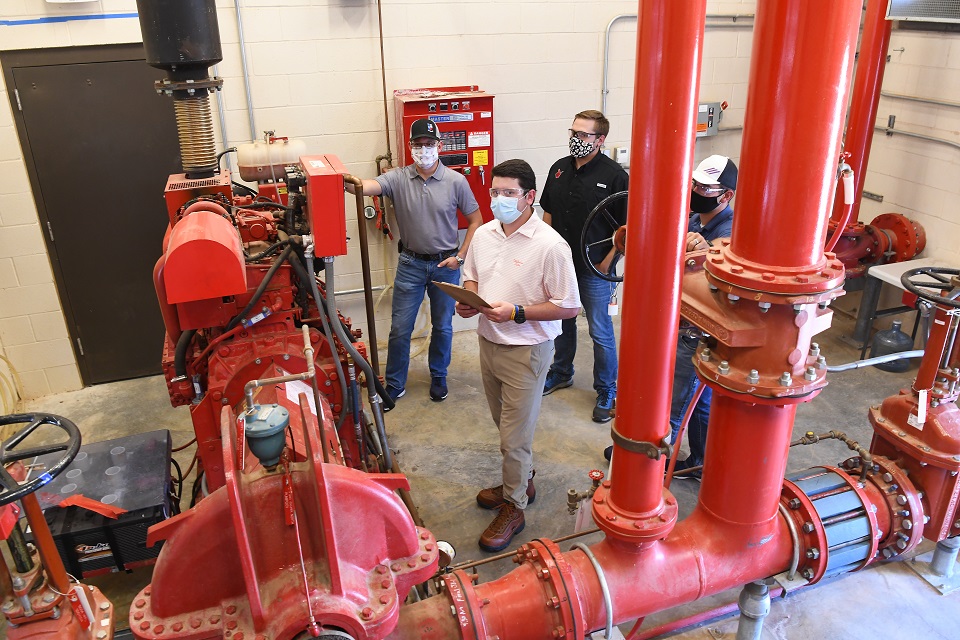
Pantex summer intern Drew Rowlands (center) checks a pump station system with coworkers Jonathan Burkhead (left), Ronnie Anderle (black shirt), and Colton Mooney (right).
Keeping projects on track and on time
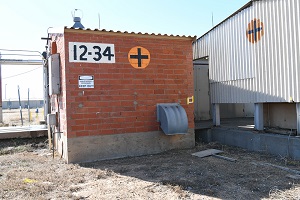
|
Pantex and Y-12 have valiantly continued vital work throughout the COVID-19 response. A part of that work is to ensure projects remain on track and on time. As of June 29, Pantex Projects had the remaining 22 projects released to return-to-work, bringing the total to 68 projects they are working on. The phased return-to-work focused on the safe return of Pantex subcontractors, beginning with priority projects first. Some of those projects included bay and cell fire system upgrades, roof asset management and a hoist installation.
To keep things moving with health and safety in mind, especially when working with off-site contractors, requirements such as approving COVID-19 safety plans were put into place and contractors were required to follow Pantex COVID-19 requirements. Even in the early stages of the pandemic protocols, here’s an example of how Pantex Projects continued their mission:
Demolition projects at Pantex are planned for many years in the future, and are bringing new interest and contractors to Pantex to perform work. Buildings 12-14 and 12-34 are two of several demolition projects on National Nuclear Security Administration’s 2020 Make It Happen List. These two demolition projects recently progressed through planning and design phases to the contractor bid phase and were the last of the 2020 demolition projects to go out for bid.
“The consequences of moving on with the bid phase without a walk down is that bidders do not submit bids or the bids are not accurate for the tasks to be performed,” said Marlin Conner, project manager. “The walk downs are a crucial step in the procurement process to facilitate competitive and fair bids.”
On May 20, representatives from 18 companies were at Pantex for the walk downs. Normally, contractors attend a pre-bid walk down before bids are submitted to see the site conditions, validate drawings provided with the Request for Proposal, and evaluate the scope for tasks that may be more or less complex than understood from the documents provided. Just before the walk down was scheduled, the plant implemented the COVID-19 Containment Phase, which resulted in delay.
The integrated project team was determined to continue the project’s momentum, and with the help of many Pantex team members, were able to overcome the obstacles and safely conduct the walk downs. In order to ensure the safety of people and facilities, each contractor employee was cleared by Medical before coming to Pantex, and all participants wore face masks. After thoroughly searching vehicles and screening people, Security cocooned the group through the security gates to eliminate the use of ARGUS stations and reduce surfaces touched by both Plant and contractor personnel. Groups were kept small and rotated through the facilities.
“At the end of the day, the walk downs were conducted just as planned due to the diligence and determination of the team,” Conner said.
They ended up with six bids, which is still an impressive amount, even outside of the pandemic.
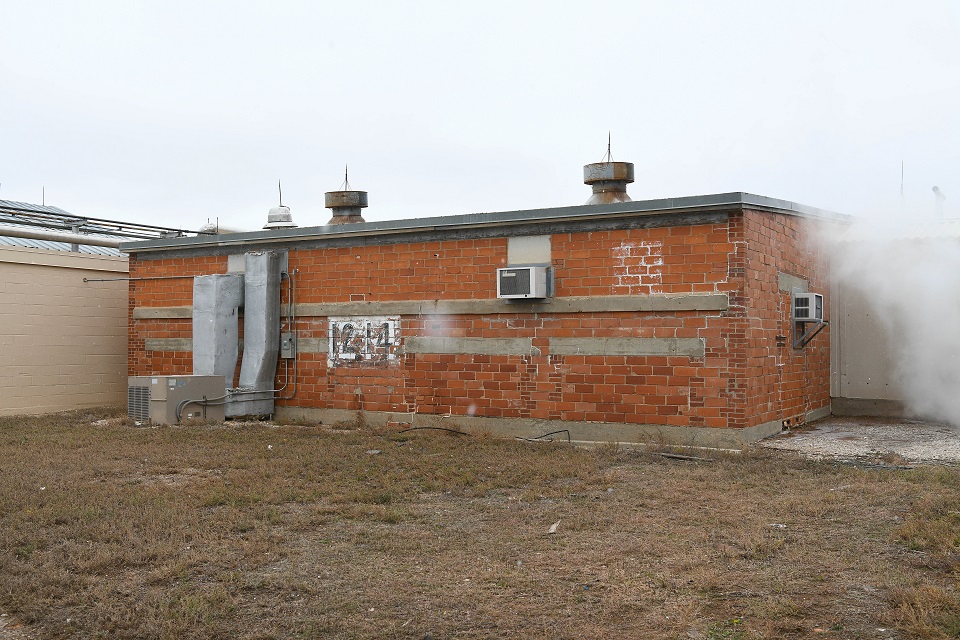
Building 12-14 is due for demolition in FY2020
Pantex Fire Department using new tools during COVID-19
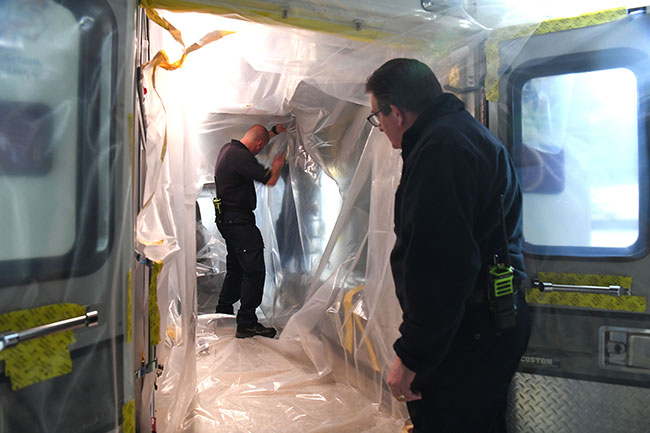
Members of the Pantex Fire Department install a Biocell Ambulance Protective System. Please note: the photo was taken prior to the COVID‑19 face covering guidance.
With the onset of the COVID-19 pandemic, the Pantex Fire Department explored new ways to protect fire department personnel and plant employees.
The general practice to protect the patient compartment in the ambulance is to line it with plastic, so the PXFD invested in 3 BioCells – a preformed plastic cocoon placed in the patient compartment of an ambulance that can be used effectively with suspected COVID patients.
“It was designed for highly contagious pathogens such as Ebola, and we can use it for a COVID-19 response if necessary” Emory Johnson, PXFD Assistant Chief said. “The secondary use is for radiologically contaminated patients.”
The one time use device can be rolled up and placed in a box for disposal keeping the patient compartment free of contaminates.
In addition to the BioCells for ambulances, the PXFD is also taking extra measures for disinfection and sanitation of their station and equipment. The PXFD houses a shift of about 20 firefighters and the Emergency Service Dispatch Center and Operations Center.
“Because personnel at the fire department are in such close proximity to each other, disinfection of the station is necessary to help prevent the spread of COVID-19,” Johnson said.
The fire department has a hypochlorous acid machine on order. These machines are used by the cruise ship industry, food preparers and the livestock industry to disinfect areas that are suspect.
To fill the gap, the fire department is using quaternary ammonium which is another disinfectant deployed by using a paint sprayer hooked to a self-contained breathing apparatus - making it portable.
“The fire station is disinfected several times a day – all common areas including the kitchen, bathrooms, door handles,” Johnson said. “It is also used to disinfect the patient compartment in the ambulance and other fire equipment after every call.
Johnson also said personnel are required to wear masks when inside the building and social distancing is enforced.
The fire station is disinfected several times a day. Please note: the photo was taken prior to the COVID‑19 face covering guidance.
